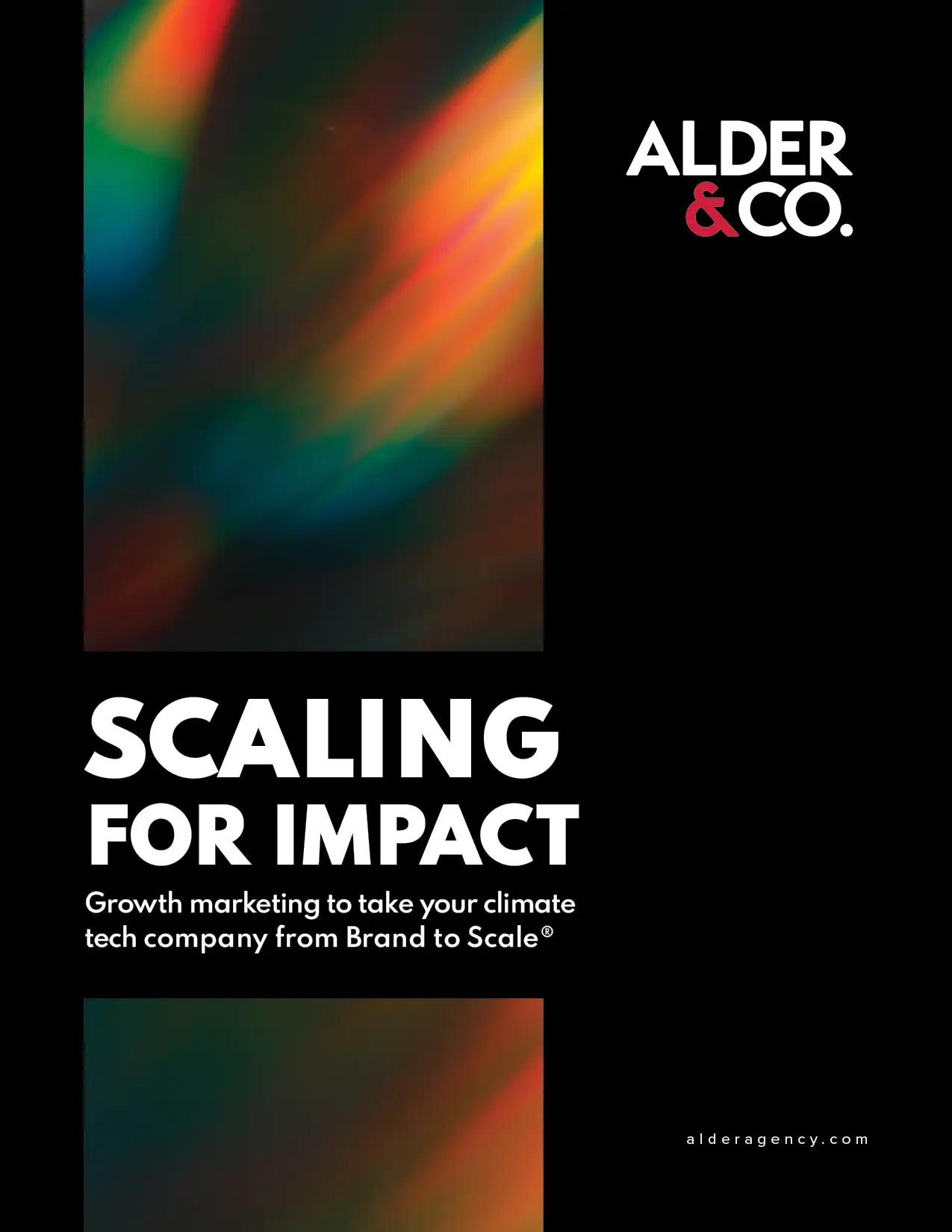Why it’s dangerous to confuse the two when growing a climate tech business
“Go-to-Market Strategy” and “Marketing Strategy” are often thrown about interchangeably, especially at the early stages of company growth. And while in early-stage companies, these two strategies might be one and the same — the primary goal of the marketing strategy will be to bring the company’s first product, solution or service to market — they typically work towards different distinct goals and require different decisions.

Let’s start by defining each concept:
- The marketing strategy focuses on how a company can deliver against its overall business goals over time. It’s long-term and company-driven.
- A go-to-market strategy — the clue is in the name — defines how to bring a new product or service to market. It’s short(er)-term and product/solution/service-driven.
To successfully grow a climate tech business, you need to have both in place. Let’s highlight the key differences between each strategy based on their most important elements:
The differences between Go-to-Market and Marketing Strategies
Goals
Marketing
The goals defined as part of a marketing strategy should be intrinsically linked to overall business goals. In the case of a climate tech startup, you might start with the exit plan — are you building the company for IPO, strategic acquisition, or to continue to grow as a standalone private company? And then break it down to what this means for how you build the brand, attract talent, win investors, grow business units, sell products, etc.
Go-to-Market
The goals for a go-to-market strategy will be much more specific and linked to what you’re bringing to market. How many products/deals are you planning to sell? What’s the revenue target? In which time frame?
This leads us nicely to the next element…
Stakeholders
Marketing
A good marketing strategy will consider the needs and interests of multiple stakeholders. These can include investors, who need to see a return on their investment; partners, who need to be kept informed about the direction of the company; employees, who need to feel invested in the company’s success; and future employees, who need to be attracted to the company’s brand, mission and culture.
Go-to-Market
However, a go-to-market strategy is usually focused on one or two specific buyer personas. This could be the ideal customer for a new product or the type of person most likely to use a particular service. By honing in on these specific personas, a go-to-market strategy can be more targeted and effective.
Research
Both marketing and go-to-market strategies start with research. You need to understand your target audience, their needs and pain points, and what they value. Once you have a deep understanding of your audience, you can start to craft a message that resonates with them.
However, the work doesn’t stop there. Your marketing strategy needs to be constantly evolving based on feedback from all stakeholders. This feedback loop is essential to keeping your brand relevant.
In contrast, go-to-market strategies are more focused on personas, testing product-or service-specific messaging, and competitive alternatives. While research is still essential for go-to-market success, the focus is narrower and the timeframe is shorter.
Ultimately, both marketing and go-to-market strategies are based on research, but they take different approaches to achieve success.
Timing
Marketing
A great marketing strategy is ongoing, adaptable, and ever-evolving. Starting with the long-term business goals and working backward from there, it will also consider stakeholders, budgets, tools, channels and team members — all of which can change over time. This does not mean that the strategy should be in a constant state of flux, but rather that it should be flexible enough to take advantage of new opportunities and overcome unexpected obstacles.
Go-to-Market
A go-to-market strategy relates to launching a new product or expanding into a new market, so it will lay out the work that needs to be done to reach one or more time-bound milestone(s). And while it may continue post-launch, it’ll be focused on that specific product, solution or service.
Channels
Marketing
The purpose of a marketing strategy is to achieve the company goals and create awareness and credibility with a wide range of stakeholders (see above). As a result, it will cover all and any marketing channels that can help achieve those goals.
Go-to-Market
A go-to-market strategy, on the other hand, is focused on generating leads and converting them into paying customers. To create an effective go-to-market strategy, you need to start by understanding your target market. Once you know who your ideal customer is, you can identify the channels that are most likely to reach them.
It’s all about alignment
A go-to-market strategy is not always about taking action, sometimes it’s about deciding not to take action in certain areas. This can mean choosing to focus on one market or industry over another, or selecting specific countries for market entry instead of others.
These decisions should be based on research, but they also need to align with the company’s overall strategy and involve key decision makers from leadership, sales, product and marketing.
Well-executed marketing and go-to-market strategies can be the difference between success and failure for a climate tech business. That’s why it’s so important to take the time to understand the concepts and develop a plan that will work for your company.
At Alder, we specialize in guiding climate tech companies at each stage of their growth journey with our Brand to Scale® methodology. We offer both Marketing and Go-to-Market planning and execution that will drive real results. If you’re prepared to take the next step in scaling your climate tech company, book a time on our calendars.


